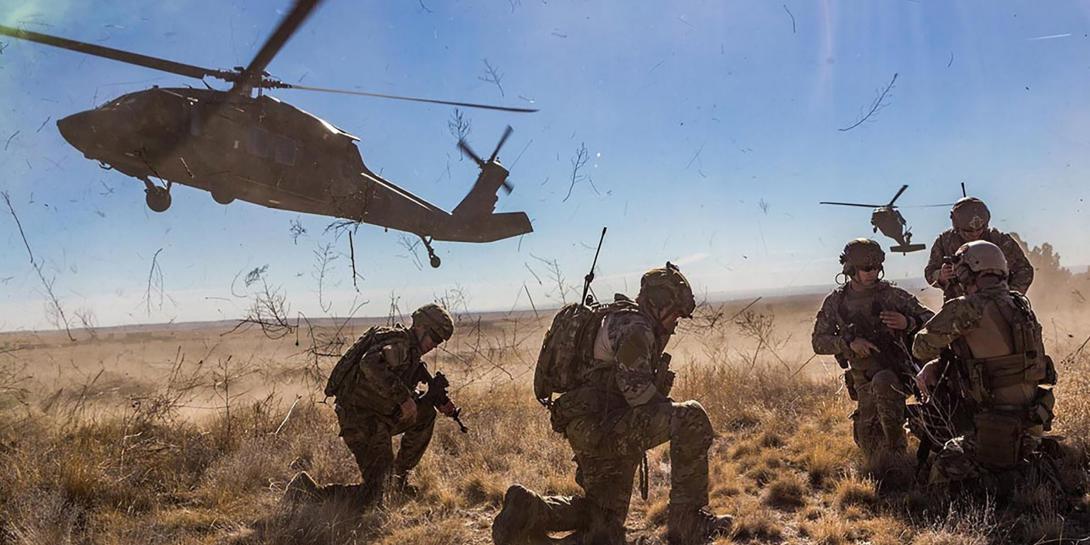LTG Fogarty Stresses Command-Centric NetOps
Protecting critical data is paramount to the Army’s vision for command-centric network operations, which will allow commanders to more easily understand what is happening on the operational network and more rapidly make decisions for the network’s defense, says Lt. Gen. Stephen Fogarty, USA, commander, U.S. Army Cyber Command.
Gen. Fogarty made the comments in a pre-recorded address as part of the virtual Army’s 2020 Signal Conference, which is hosted by AFCEA.
“Part of the solution to being faster and more aggressive in defending our networks means moving toward a concept of command-centric network operations, establishing areas of operations under a single commander with responsibility, authority, resourcing and accountability,” Gen. Fogarty explained.
The network is a vital weapon system, he indicated. “In a very real sense, in all-domain operations, the network is another weapon the commander’s arsenal, and data will be the ammunition for the commander.”
The concept will require greater situational understanding of the network. “Our commanders must be able to see the adversary and see themselves in real time in cyberspace with the same level of confidence that they have in the land domain,” the commander said. “They need to be able to sense, understand, decide, act and assess faster than the competition, and gain a decisive advantage across the information environment and cyber domain.”
Appropriate infrastructure and network also are important. “Command-centric network operations requires a dynamic mission-focused infrastructure with tailored operations and defenses. Network design considerations include balancing requirements between usability risk and security risk and deploying zero trust security concepts where every user is verified, every device is validated and access is limited so that we can protect the data, we can assume the breach and employ the least privilege,” he declared.
He also stressed the importance of data security. “Protecting data is paramount. We know that to compete, deter and win against peer and near-peer adversaries will depend on leaders having timely access to reliable data that can be shared whenever and wherever needed.”
Data is at the center of decision making, he added, explaining that advanced technologies such as artificial intelligence and machine learning will help sort through the data. “Combined with reliable, secure and resilient network infrastructure and aided by artificial intelligence and machine learning, timely access to trusted data will shorten the commander’s decision cycle, enabling better decision making.”
Effective management of the data also is key. “However, data is only useful if it is reliable, accessible and usable. To be effective, data must be delivered on demand, quickly and automatically. Effective data management requires a reliable and secure data infrastructure and data storage supported by a hybrid system to optimize the benefits of the cloud while allowing greater control and security,” he said. Data management must also be agile, able to evolve and improve with technology without loss of service to users.”
Unfortunately, the current infrastructure impedes data management. “In order to reap the benefits of data management, the right infrastructure must be in place. Currently, our data is stored in disparate infrastructure, in solos, making it difficult to query data across systems, wasting resources and delaying the time it takes to make decisions,” the general said. “Data must be systemically collected from many platforms and sources, consolidated and stored securely.”
Army modernization plans include an integrated network, which Gen. Fogarty said will “help break down data silos, enable interoperability and deliver data at the speed of need.”
The Army Futures Command is leading the Army’s network modernization efforts focused on creating an integrated tactical network for battlefield communications and an integrated enterprise network providing cloud, business and infrastructure services and applications. “Command-centric network operations will be pivotal to defending our networks, systems and data and ensuring both access and reliability of data and information,” he added.
Command-centric network operations also will help establish a global enterprise command and control structure, which will depend on critical initiatives, including enterprise IT as a service. “Based on lessons learned, we can no longer do enterprise IT by ourselves.
The Army’s Enterprise Information Technology as a Service, or EITaaS, a pilot program, is “foundational to command-centric network operations,” he said. The program includes three vendors providing IT services at three different locations: Microsoft at Army Futures Command in Austin, Texas; AT&T at Camp Roberts, an Army National Guard post in California; and Verizon at Fort Polk, Louisiana.
“These locations represent a wide range of the Army’s force structure, strategic, tactical, training and business-sized components as well as current network configurations,” Gen. Fogarty said. “Having three world-class companies as partners to help change the way the Army runs its network is a unique opportunity to advance both the security or our networks and the quality of service for the Army end user.”
If you enjoyed this article, you may also enjoy reading about Army Cyber Command's delegation of cyber operations authority to the Army Network Enterprise Technology Command (NETCOM).





Comments